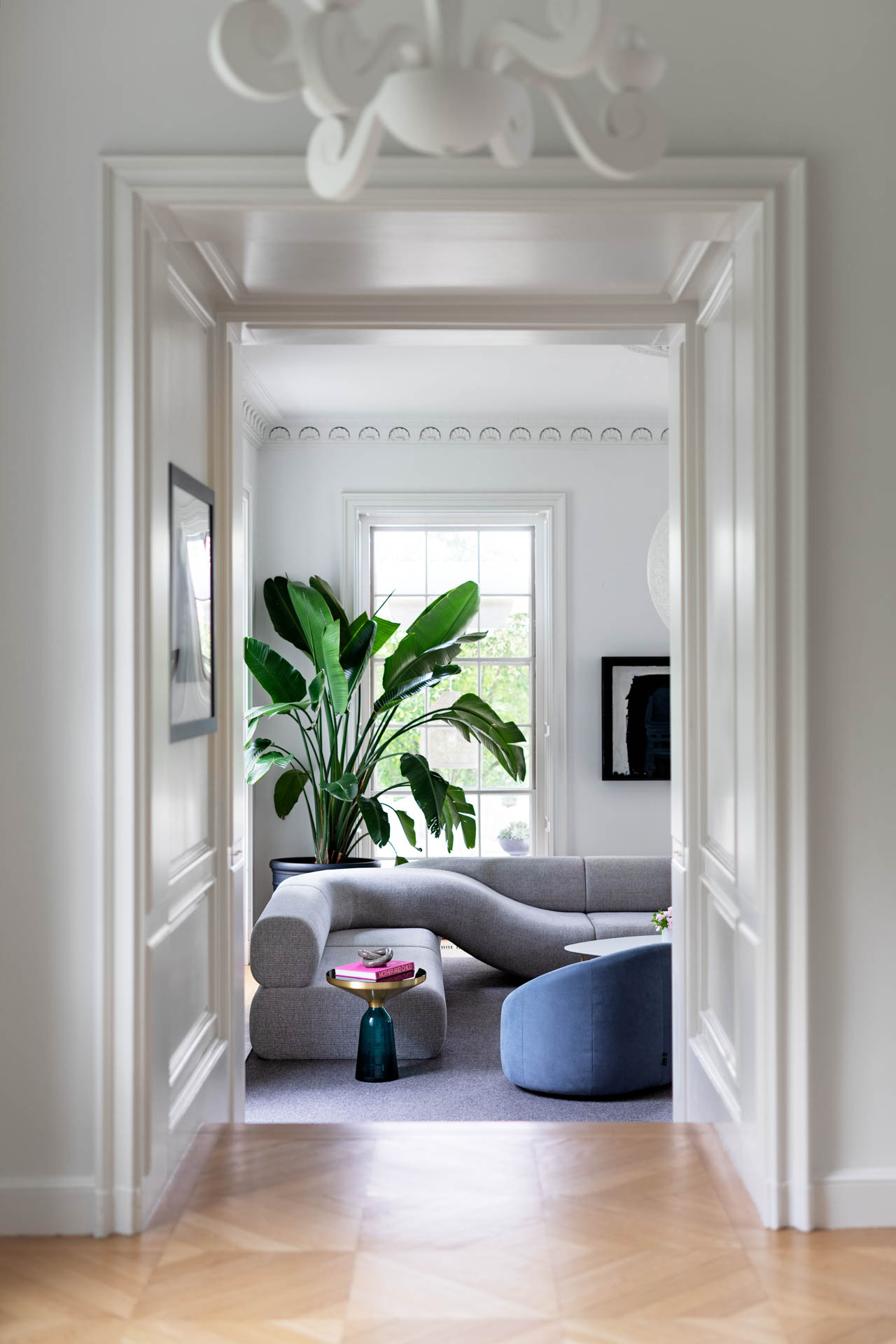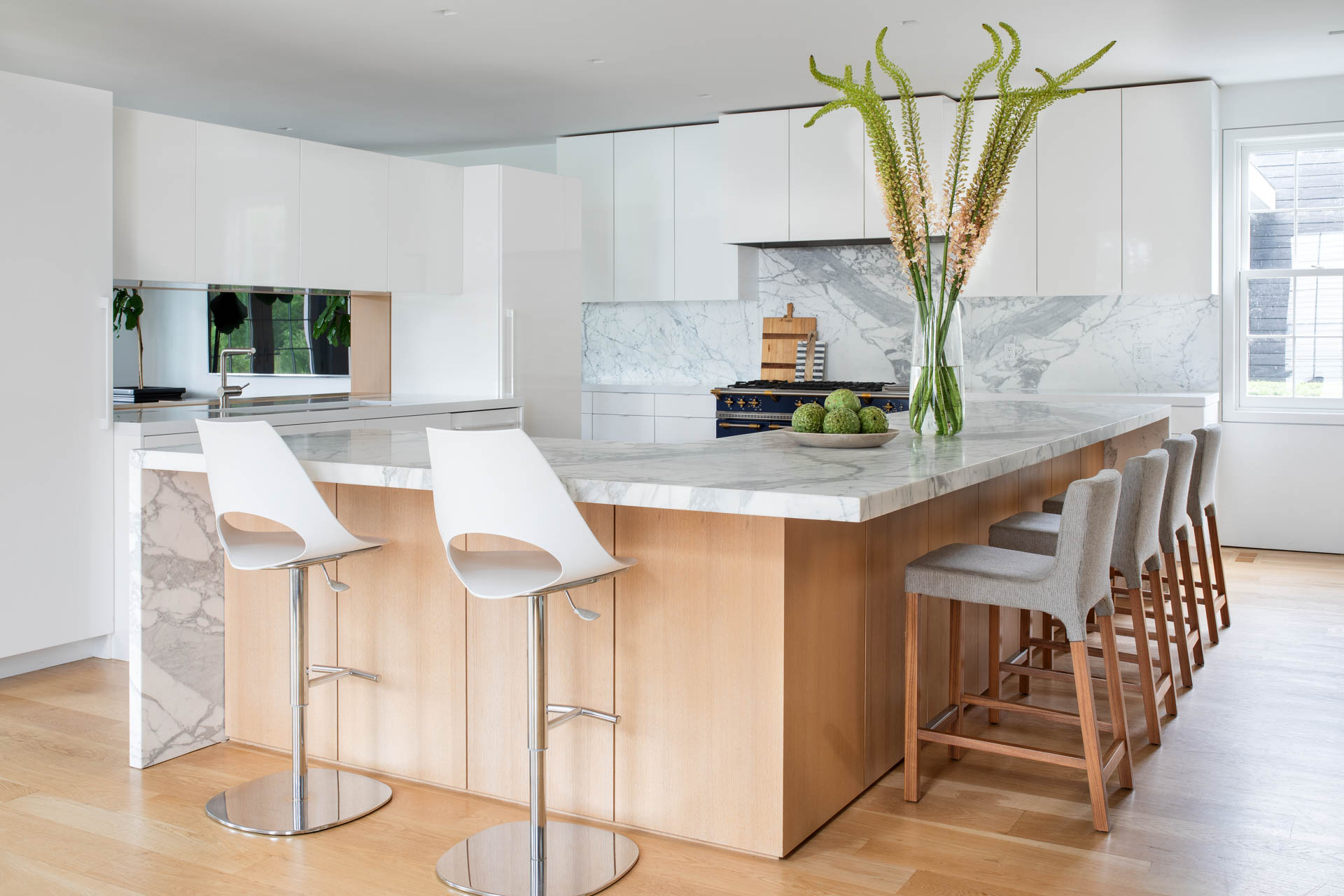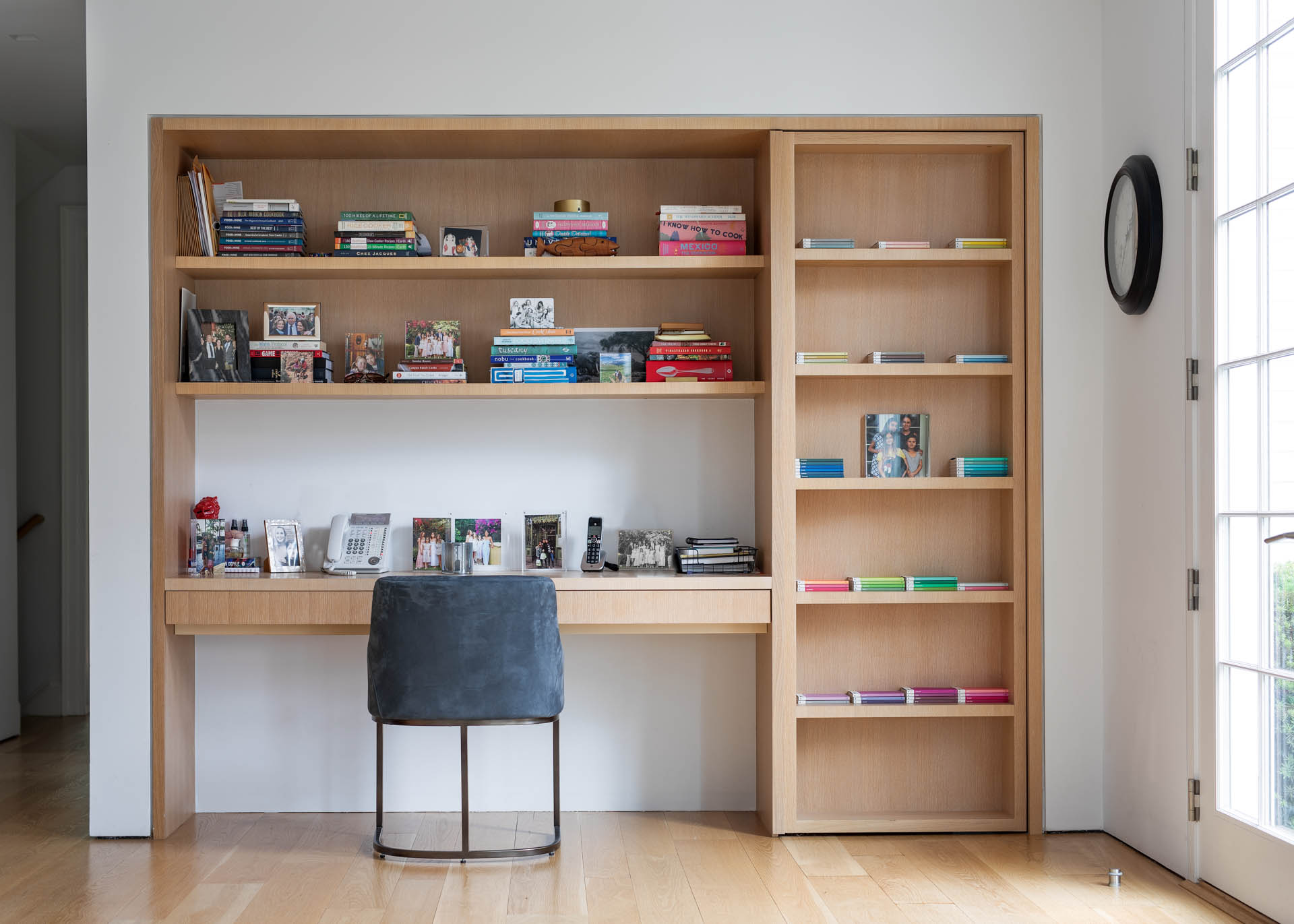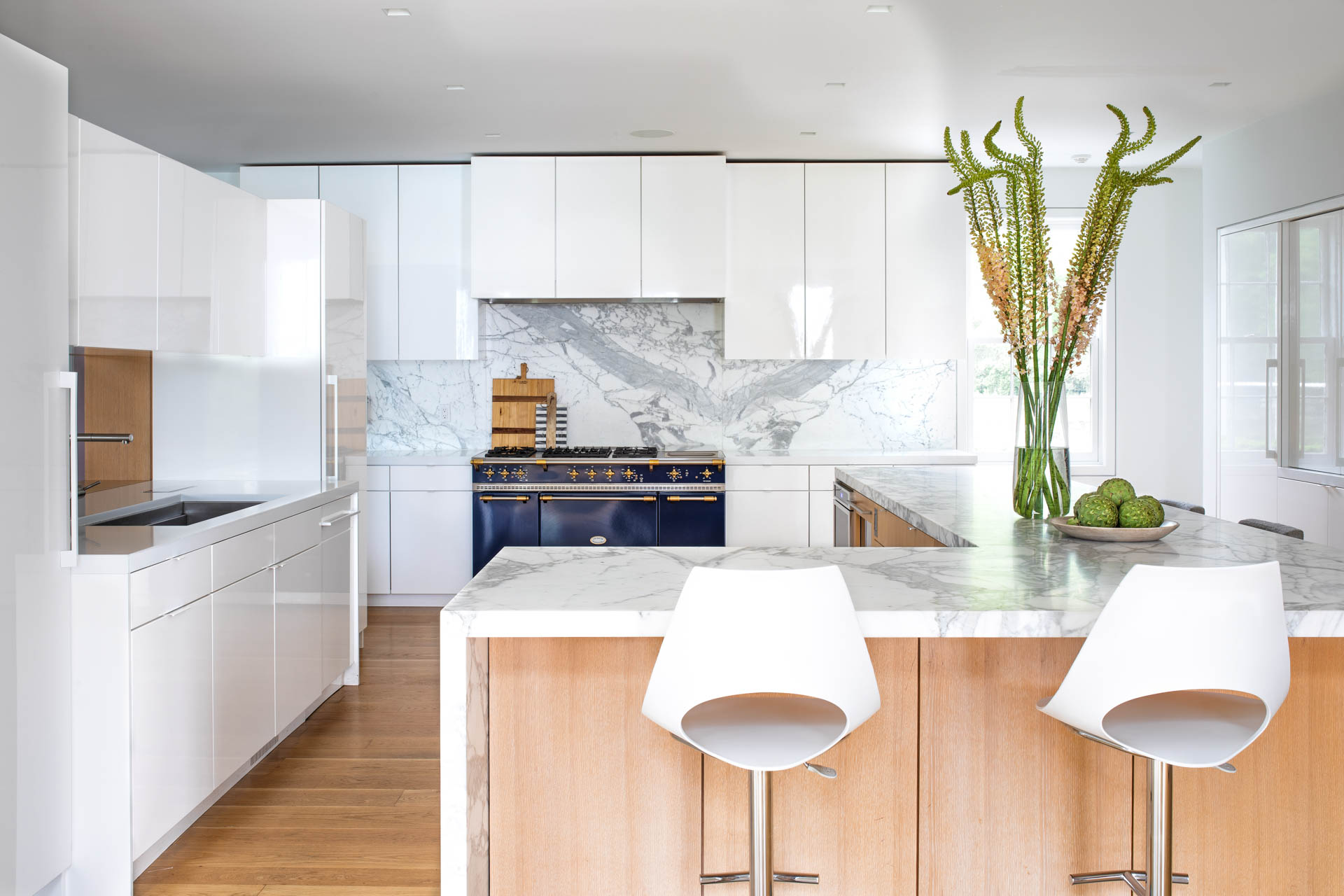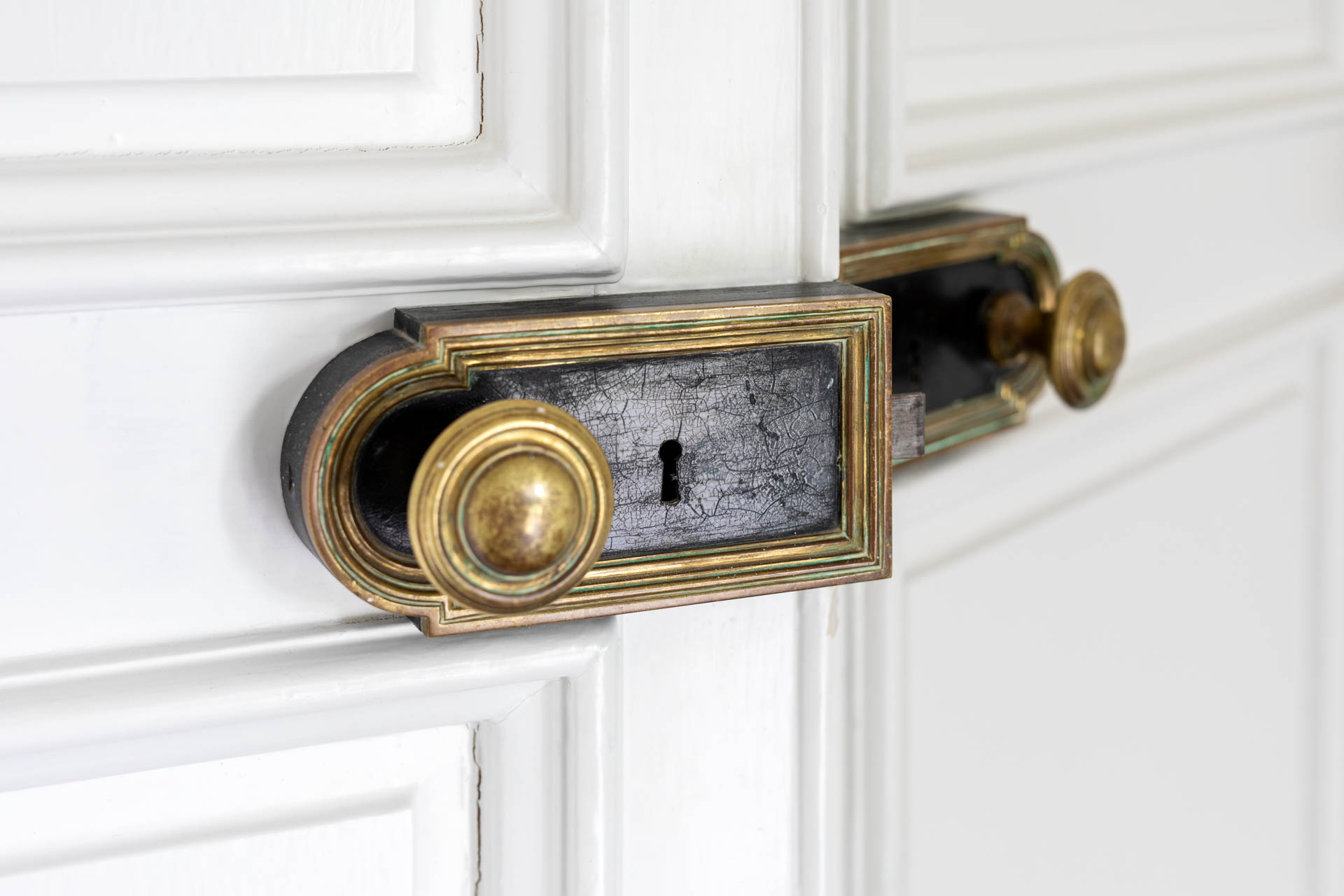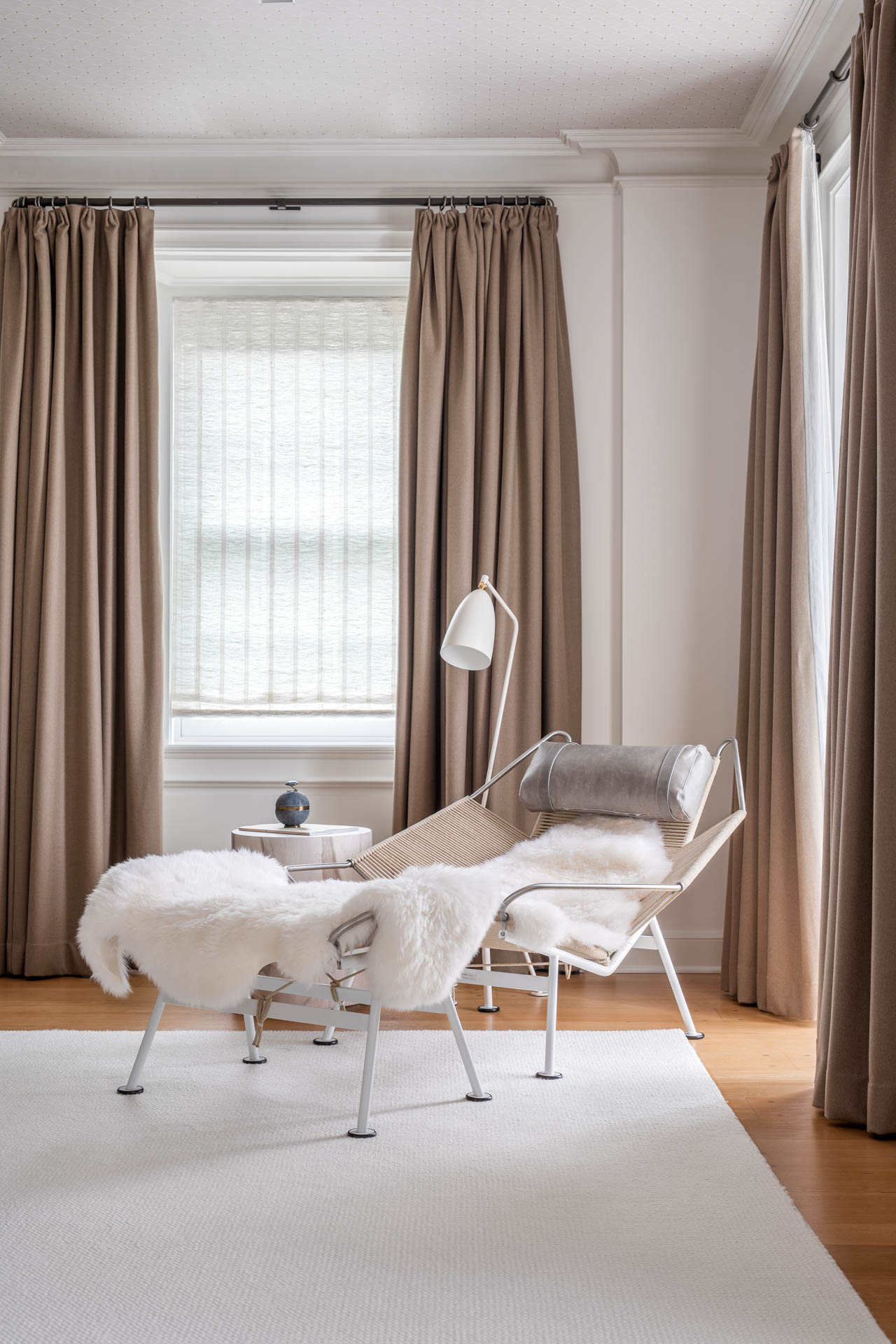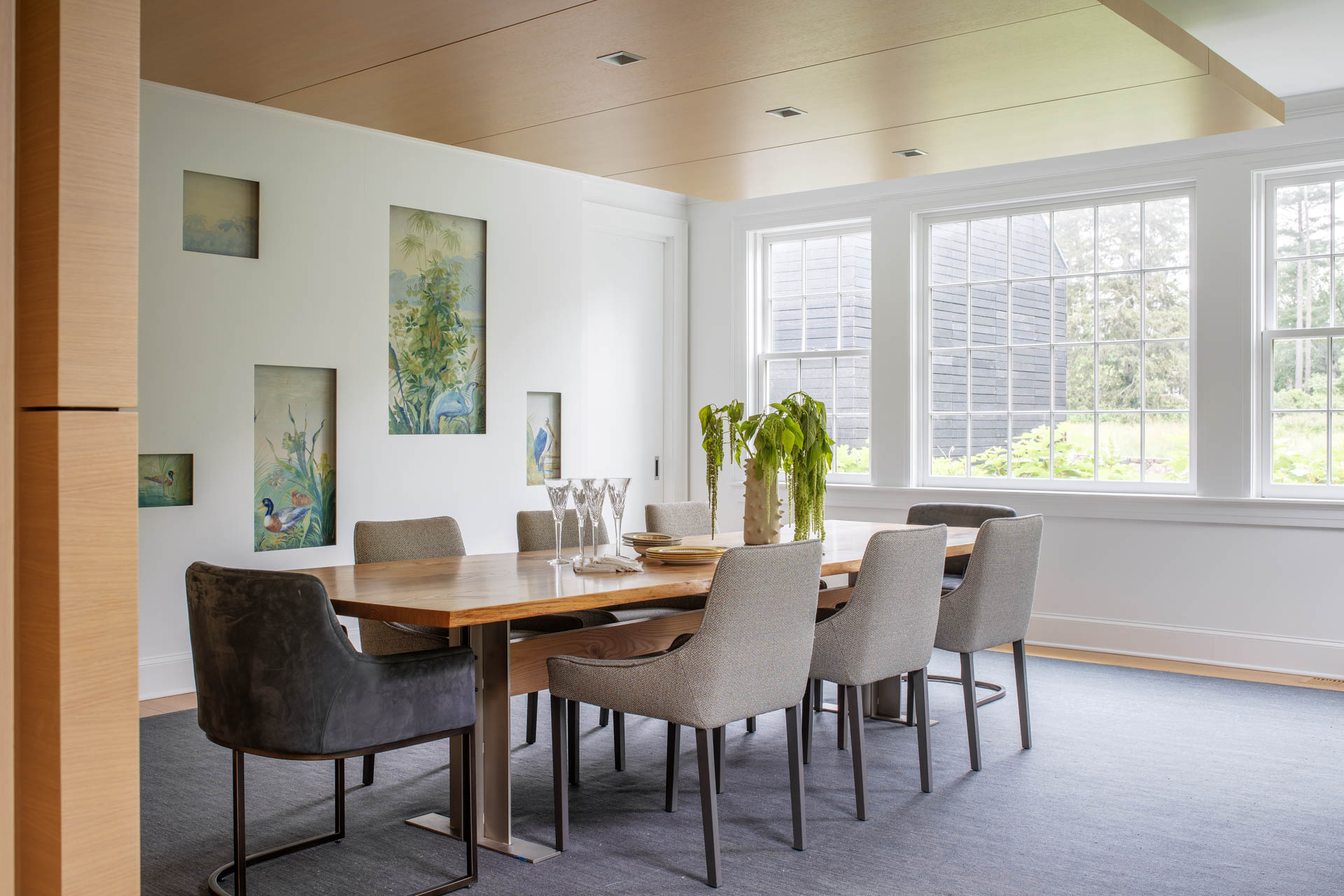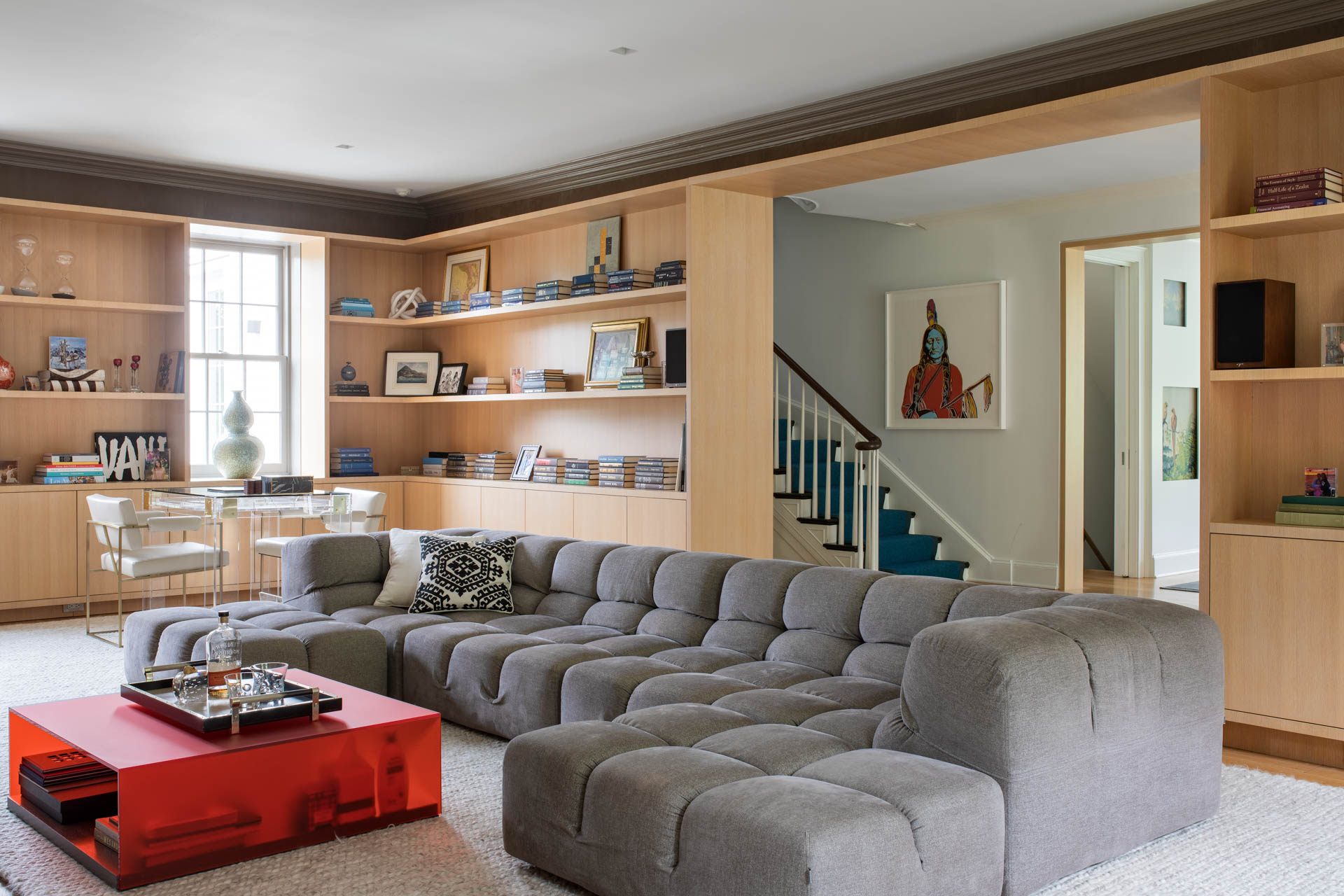
A Home Built Post-American Revolution takes on Cutting Edge Style by Interior Designer, Amy Hirsch
Amy Hirsch grew up in Greenwich and comes from a family of tradesmen. She attributes her calling to interior design, by way of studies at FIT, to her front row experiences with cultivated materials and craftsmanship and all the details that go into building large scale homes. Amy says, “I am fascinated and respect the teamwork of all involved to put together a singular idea and for it to come to life.”
Her work is broad, “the beauty of my job is that I can span different styles. I can adapt to any style if there is good communication between myself and the client on the overall aesthetic. Each project we curate has an ethos towards the architecture, a client’s personal style and programing of the project.”
Tell us about the history of this house. It has the gracious spaces and some architectural details from days gone by.
The house was originally built in 1780. The ballroom was added in the 1920s. I can’t help but think about the romance of the 1920s and the fanciful events, women dressed in beautiful gowns and dapper men enjoying this space. There is an elegance with all the original scallop shell moldings. I feel the walls still hold the essence of the period. The multi-height ceiling is spectacular.
How did you decide where to keep the original moldings and antique hardware, and where to strip those away for an almost Scandinavian aesthetic?
It’s funny, when someone wants a modern aesthetic, to me it results in simple, edited, less is more. The new orientation of the front door and courtyard allowed us to divide the house into areas which maintain the past, while the more lived-in day-to-day spaces have a streamlined approach.
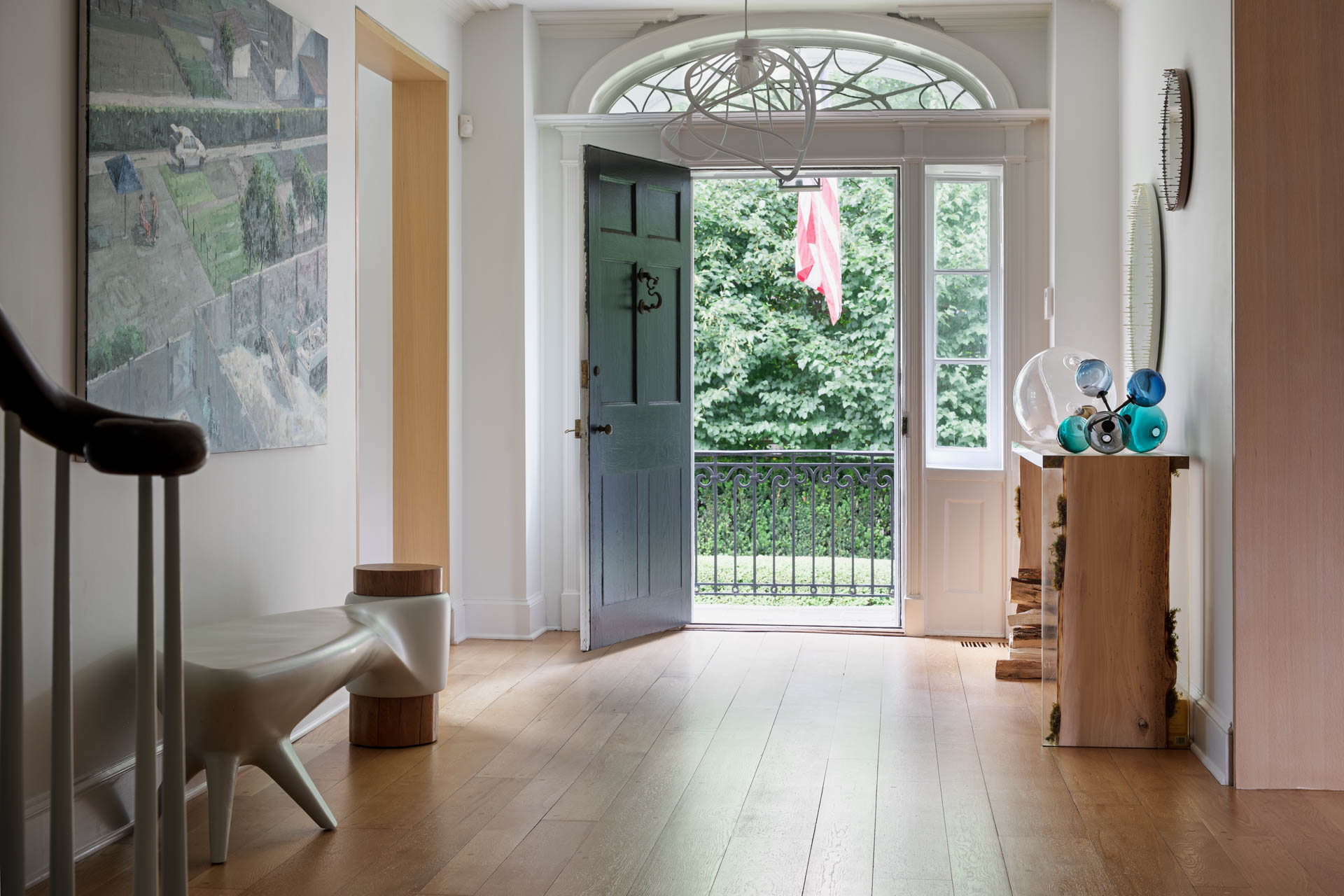
Describe your design relationship with your client on this project.
Wendy was super easy to work with, she has great energy and a very direct approach which always helps the process. I remember when I first met Wendy, she shared that her home in Colorado is her sanctuary and her face lit up as she spoke of the house. Colorado is her solace and I wanted her and her family to have the same feeling about Greenwich. The tricky part was how to do that as they are completely different in every aspect. Respectfully, there was a layer to the house that was present when we engaged. Weaving together aspects that are already existing is a challenge. However, we were able to complement larger scaled furniture with chunky carpets and textiles. Our selections were reserved, yet an artistic approach with unusual silhouettes.
What were her needs/requests for this project?
Spaces to entertain large gatherings and then more intimate spaces to retreat to. The beauty of an old home is that you have many smaller spaces within, so creating tranquil spaces for Wendy to be more centered was easy to do. There are lots of small sitting spaces where you can snuggle up within the interior envelope. Off the primary bedroom there is a small den which we painted a rich ink blue and added a wonderful flannel plaid, a cozy carpet and an unusual day bed in the center. There is a small office next door. We sourced a walnut countertop and covered the walls in a paper which was reminiscent to birch.
Tell us about the design for the ballroom.
The furniture composition in all the spaces were very much influenced by entertainment for large and small scale. The ballroom is composed of multiple seating areas which can be pulled apart and repositioned. When a space is this large, it is tempting to add more layers, the key is to know when enough is enough.
The big, beautiful triple-hung windows in the ballroom…were those existing?
Those are existing and a treasure – you do not see floor to ceiling triple hung windows this large. In a later phase, we added the steel pergola outside on the terrace. You must go through the window to access from the ballroom, it’s quirky and charming.

How did you position the artwork?
Wendy had all the artwork, which is spectacular, large in scale and brings a sensation to each space as you interact with them. When you introduce contemporary art in an environment which has a traditional sensibility there is a push and pull energy which live together creating harmony.
Within the core of the house, I wanted the space to feel as if you were in an art gallery in NYC, so we complemented the art with an organic shaped bench and a Lucite console table with moss accents sandwiched between. These pieces are unexpected and are considered another layer of art, yet functional.
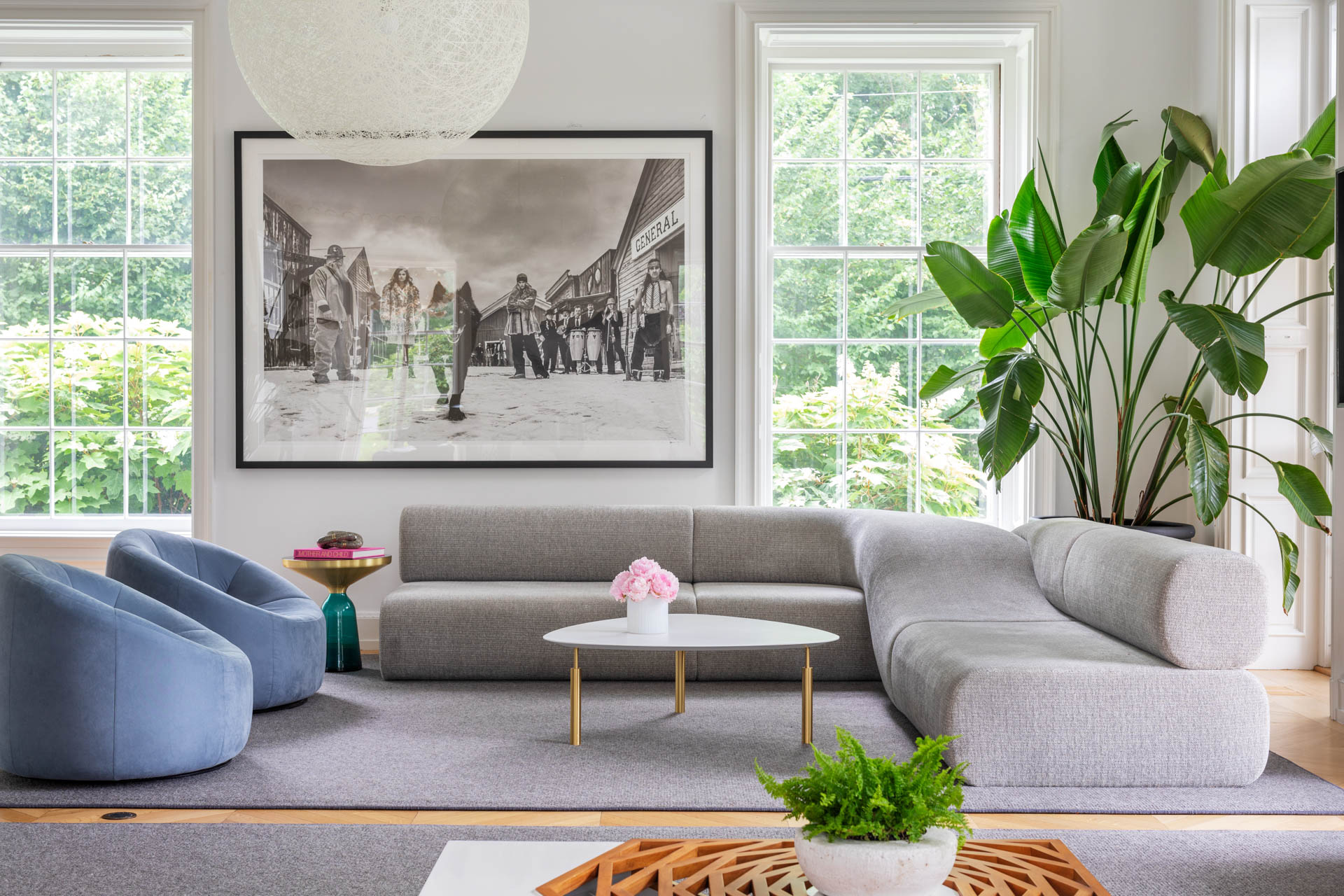
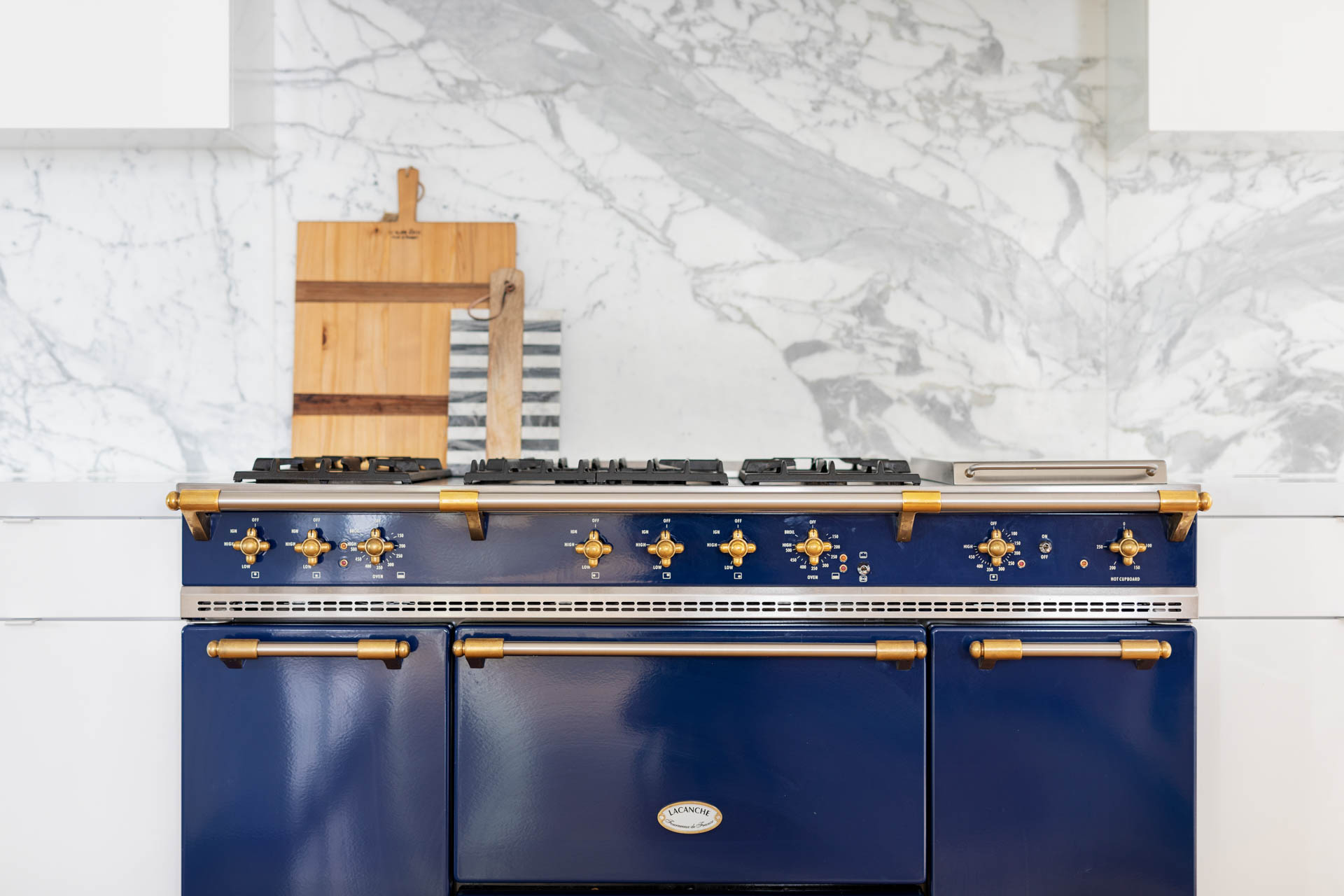
Is that an octagonal hall with the dark floor? How did you decide to differentiate the spaces by changing the stain on the parquet?
The octagonal hall provides the new “entrance” to the house, I wanted the space to remain minimal and raw. I used a wallpaper which looks like it is peeling apart to hint the house had been deconstructed. As you pass through the spaces they are now renewed and preserved. The octagonal space has two secret rooms which are a surprise, a hidden powder room and tiny bar where we clad the walls in a whimsical Hermes wallpaper.
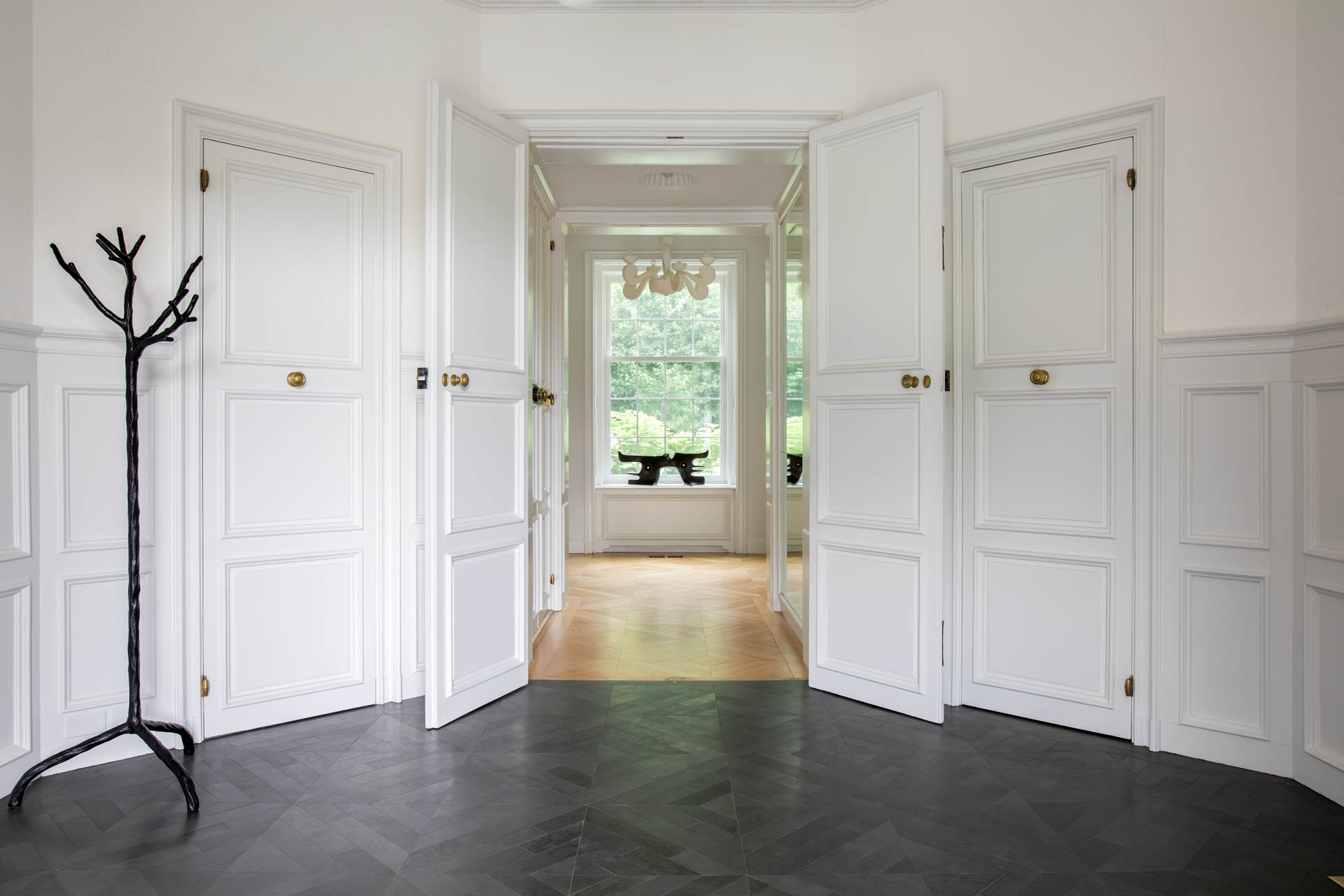
The view into the walk-in closet from the primary bedroom draws the visitor/viewer in…were you considering these two spaces as one?
Wendy’s closet is full of vibrancy, her clothing is spectacular and appreciation for culture details which was the inspiration for the primary suite. At the island, we added a white leather embossed, upholstered countertop. It’s a simple detail but elevates the space. The primary bedroom is tranquil yet feminine. We added the fun bocci lighting on both sides of the bed. Up close, you can see the detail of the copper encasement of the pink glass globe. Special little details make all the difference.
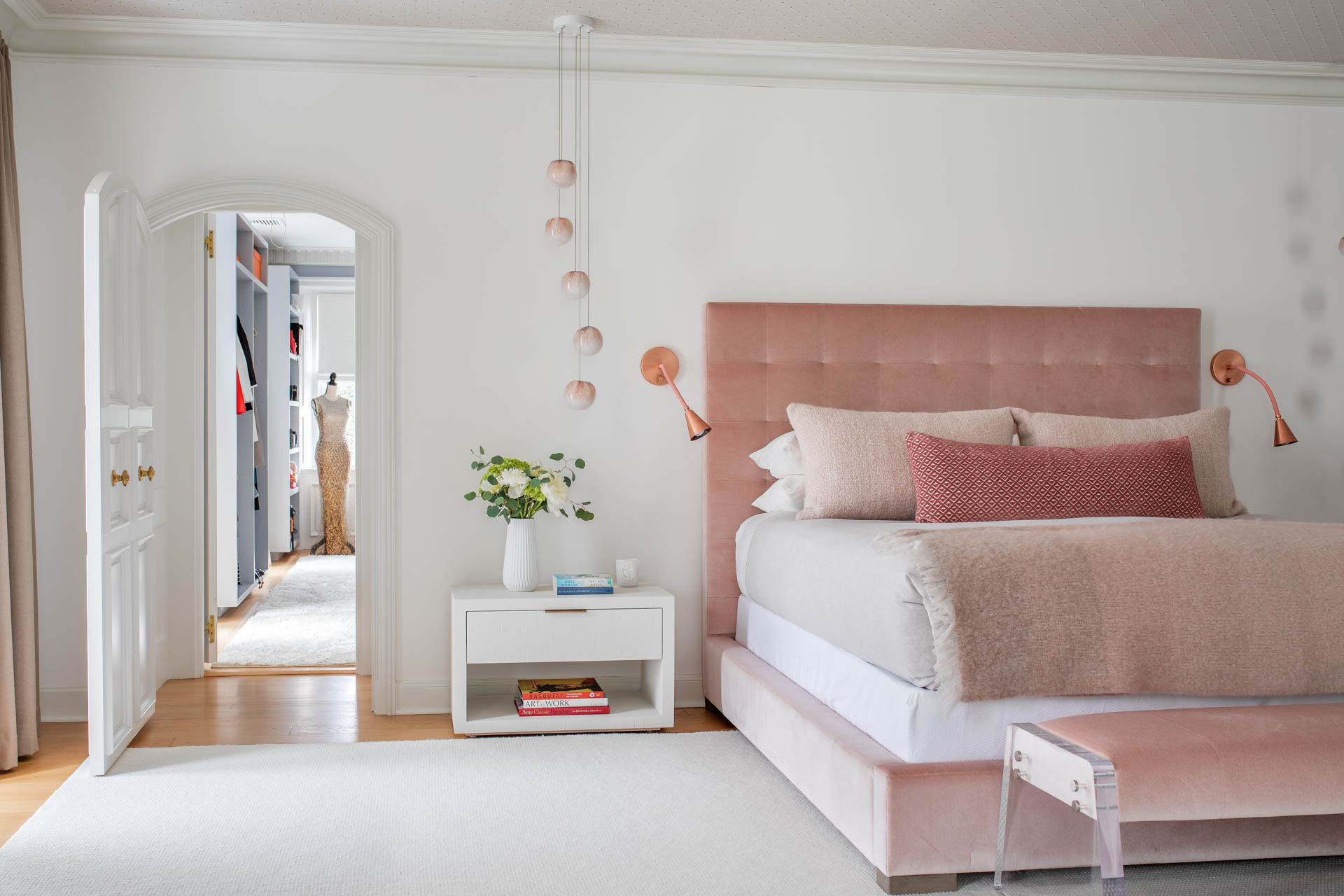
How did the client’s family react to the finished project?
They are delighted – the family can move around the house with such ease. It’s also important to share that the house receives beautiful light inside and out, which only enhances how one experiences these spaces. The layout of the interior spaces allows great direction to align with the exterior which Wendy keeps native, natural and approachable. These components fit together to bring joy and a connection with the land.




